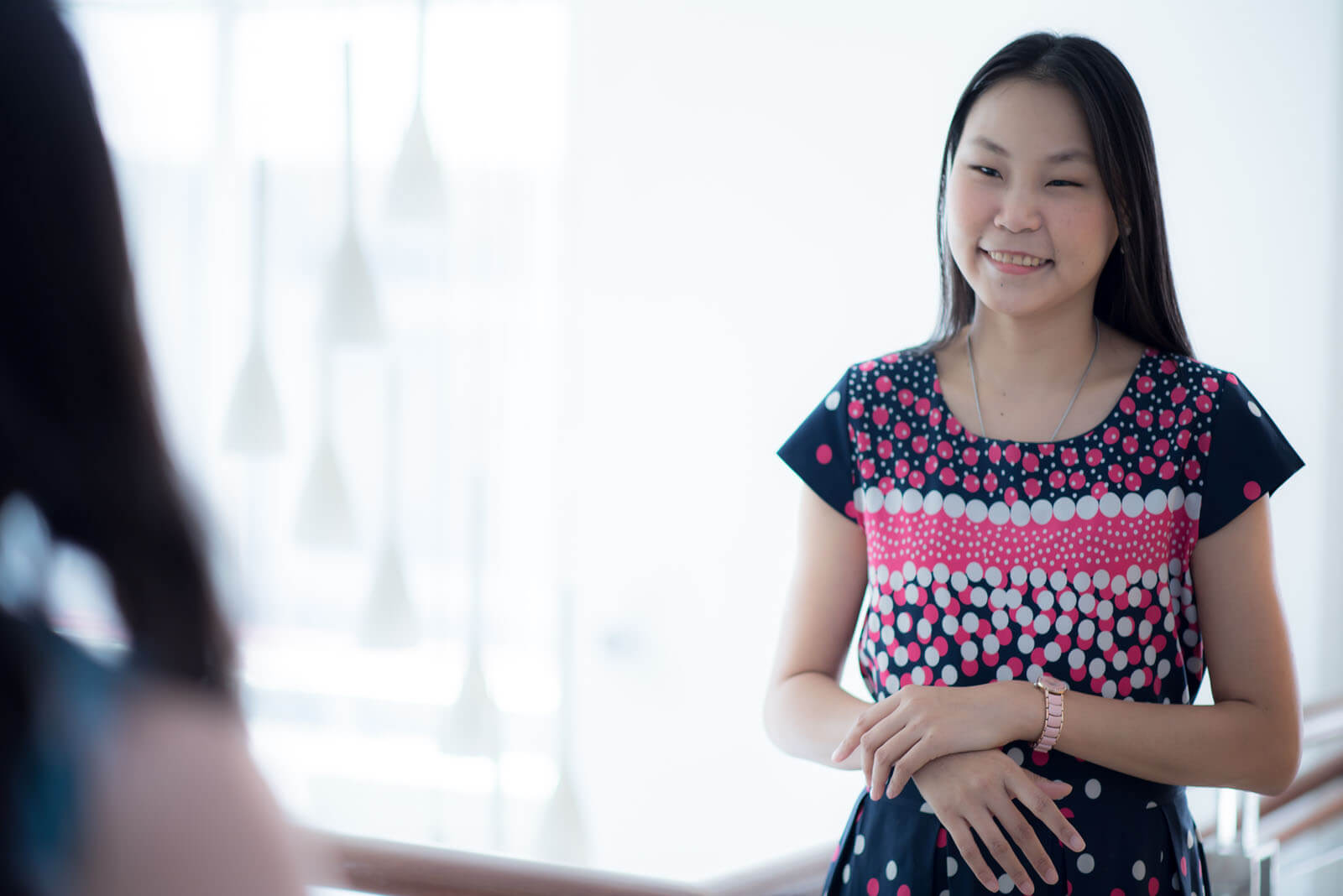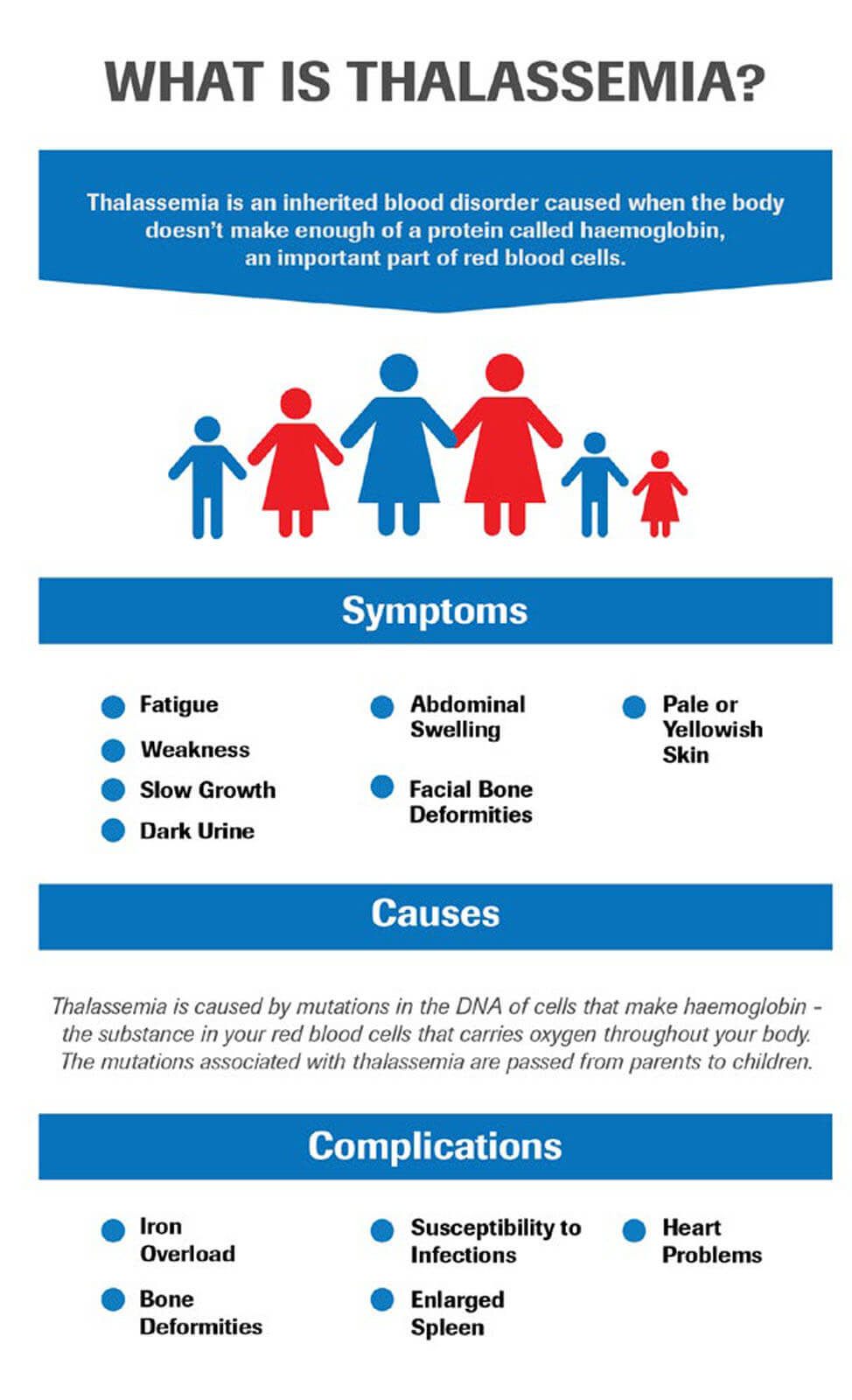Arinthorn Patchimpihong, or Fai as she likes to be called, says these words without a hint of despair. An inherited disease, thalassemia is passed on from parents, who carry the mutated thalassemia gene, to their children. In Fai’s case, she’s had the disease all her life and was diagnosed with thalassemia major when she was only four months old. In her first-ever interview, she talks to Roche Diagram magazine about why she doesn’t see herself as a patient and her mission to live a full life despite the odds.

Fai considers Siriraj Hospital in Bangkok, Thailand her second home. She has been going to the hospital every three weeks for blood transfusions for the last 33 years. As an administrative assistant, this is also where she works. You could call it sheer coincidence or a chosen path.
“What are some of your childhood memories?” she asks when we meet her at work. “For me, it was going to Siriraj hospital for blood transfusions. My earliest memories are the smiling faces of the nurses and the kind words of the doctors. That’s why I never dreaded these visits. In fact, they lifted my spirit.”
It was a constant reminder that her disease didn’t define who she was. Fai does not have any physical symptoms of thalassemia, such as yellow or pale skin, bone deformities especially in the face, or a short stature.1
“When I graduated, I applied for a job at a fashion design studio. I did not manage to get this job – perhaps due to the perception that thalassemia patients need time off every few weeks for blood transfusions,” she said matter-of-factly.
Not one to be bogged down by rejection she continues, “I was determined to make it on my own and managed to get a job selling clothes for two years. But it was tiring and, on a deeper level, I didn’t feel fulfilled. Was I making a difference?”
Thankfully, her doctor offered her a job at the Siriraj Hospital Thalassemia Center where she would be able to work and get her blood transfusions. “Working here gives my life real meaning. The team here is great to work with and I find joy helping people like me at the center.”

According to a 2008 World Health Organization (WHO) bulletin, about 45.5% of the population in Southeast Asia is affected with different types of haemoglobinopathies.2 With more than 60 different thalassemia syndromes, Southeast Asia has the most complex thalassemia genotypes in the world.3
When I was growing up, people did not know what thalassemia was. My mother received antenatal care but wasn’t told about any screenings for thalassemia. They had no way of knowing if they were carriers.
Today, there is a lot more information on the disease and people have greater understanding, which makes family planning easier.
According to the WHO, a policy of detecting carriers of thalassemia and informing them of their risk, and possibilities for reducing it, usually leads to a fall in births and deaths of affected children.2
Fai knows first-hand what a difference the right level of care makes. The doctors encouraged her parents to let her live as normally as possible so Fai had a typical childhood, without restrictions on her activities in school. Despite having to take sick leave every three weeks to visit the hospital for her blood transfusion, Fai managed to keep up with her schoolwork.
“I wasn’t treated like a patient so I never felt like one.”
But Fai is aware of the realities of living with the disease. She recalls the time she contracted a hepatitis infection because of a blood transfusion. “Blood safety is important for all patients but for thalassemia patients, transfusions are our primary treatment.”
Without the guarantee of safe blood, we are at risk each time we get a transfusion.
The Thalassemia International Federation (TIF) estimates that 70-80% of thalassemia patients are born and live in countries where blood safety, blood-related and other policies related to the indicated clinical management of thalassemia are abysmal (or even non-existent).4 Nucleic acid testing (NAT) – a molecular testing technique for blood screening – is used to reduce the risk of transfusion transmitted infections (TTIs) like HIV and hepatitis.
With greater sensitivity and specificity, the NAT technique therefore provides another layer of security for thalassemia patients, by ensuring a safe blood supply.5 Thankfully, NAT is mandated in Thailand and the blood supply in Thailand is NAT tested.
“Having the confidence that the blood is tested before transfusions gives us patients’ peace of mind – we know we won’t have another illness on our hands,” Fai added.
As part of her job, Fai regularly meets patients from all parts of Thailand and provides insight into the struggles they face. “Many patients who come here travel from provincial areas to the city to get treatment. This often means they have to stay in a hotel for the night after their transfusion.”
“That’s time away from work plus cost of travel and accommodation in the city. So proper treatment for thalassemia can be impossible for some to manage and as a result, severely affects their quality of life.” Fai is thankful that she gets her treatment at the Siriraj Hospital where she trusts the doctors and the care that she receives.
Despite the challenges they may face, Fai advocates for thalassemia patients to live as normal a life as possible, and not to let their illness hold them back. “Our disease should not determine our self-worth. We can still have a positive outlook on life and not think of ourselves as disadvantaged. Like everyone else, we should just give priority to our health first and then concentrate on other responsibilities — our education, job or lifestyle.”
References:
1Rachmilewitz, Giardina. 2011. Blood Journal First Edition Paper. How I treat Thalassemia.
2Modell, Darlison. 2008. WHO International Bulletin, Global epidemiology of haemoglobin disorders and derived service indicators.
3Fucharoen, Winichagoon. 2011. Indian Journal of Medical Research. Haemoglobinopathies in Southeast Asia.
4Eleftheriou. 2017. International Alliance of Patients’ Organisations (IAPO) Blood, blood safety and blood availability – A global challenge.
5Hans, Marwaha. 2014. Asian Journal of Transfusion Science. Nucleic acid testing – benefits and constraints.














